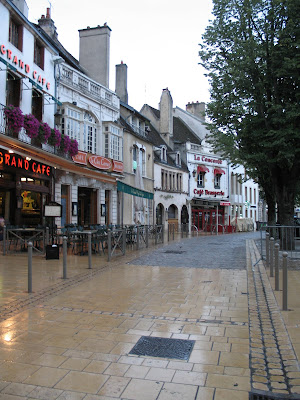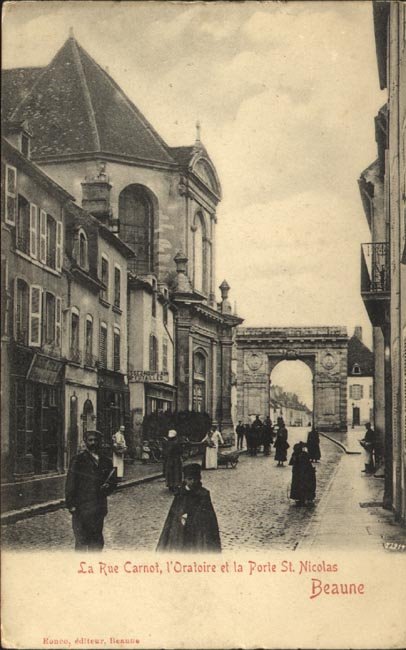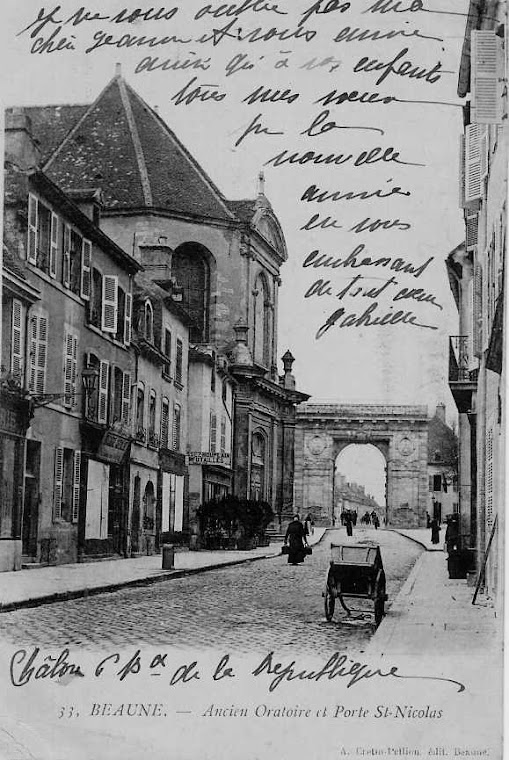Beaune is the ancient capital of Burgundy. It is a small town with a population of about 20,000 but, because wine is such a big deal, lots of people swarm upon the area.
There is a boat load of cultural stuff to do. There are summer music performances in the Hospices and the church of Nôtre Dame, a film festival every autumn and the famous Wine Auction in November, among other international events.
It seems that almost everyone who lives in the Burgundy region is in the wine trade, either directly or indirectly. If they don’t make the wine, then they own the vines, work the fields, build the tractors, design the labels, manufacture the cases, recycle the bottles, dream up the advertising, distribute the pesticides, etc. And then there are folks like us who come to savor the labors of the vines and taste the wines!
Beaune was founded by the Gauls around the 6th century B.C. They built their community between two small rivers, the Aigue and the Bouzaize, both of which still run around and underneath Beaune.
Conquered by the Romans in 52 B.C., then christianized by St Martin in the 4th century, the history of Beaune follows the general history of the region. But in the 8th century, Beaune became a significant community with the arrival of monastic groups. When the monks first began to settle here, they brought with them what would become the future of Burgundy, grape vines and viticultural know-how.
By the French Revolution in 1789, there were 11 monastic foundations in Beaune. Most of their vineyards were outside the city walls, but their cellars and winemaking facilities as well as their living quarters took up over 60% of the city proper. With the suppression of the monasteries in 1792, all the monasteries and their lands were sold off. Each religious house was ready-made for the production and storage of wine. Thus were born many of the large wine firms that now occupy Beaune.
The Nôtre Dame Basilica in Beaune was founded in the early 12th century by the Duke of Burgundy, Hughes II, and his wife Duchess Mathilde. A visit to the church examines several different building periods from the 12th to the 19th centuries. There are some interesting carved capitals of the 1130s and some frescoes of the 15th century with distinct Italian influences.















































